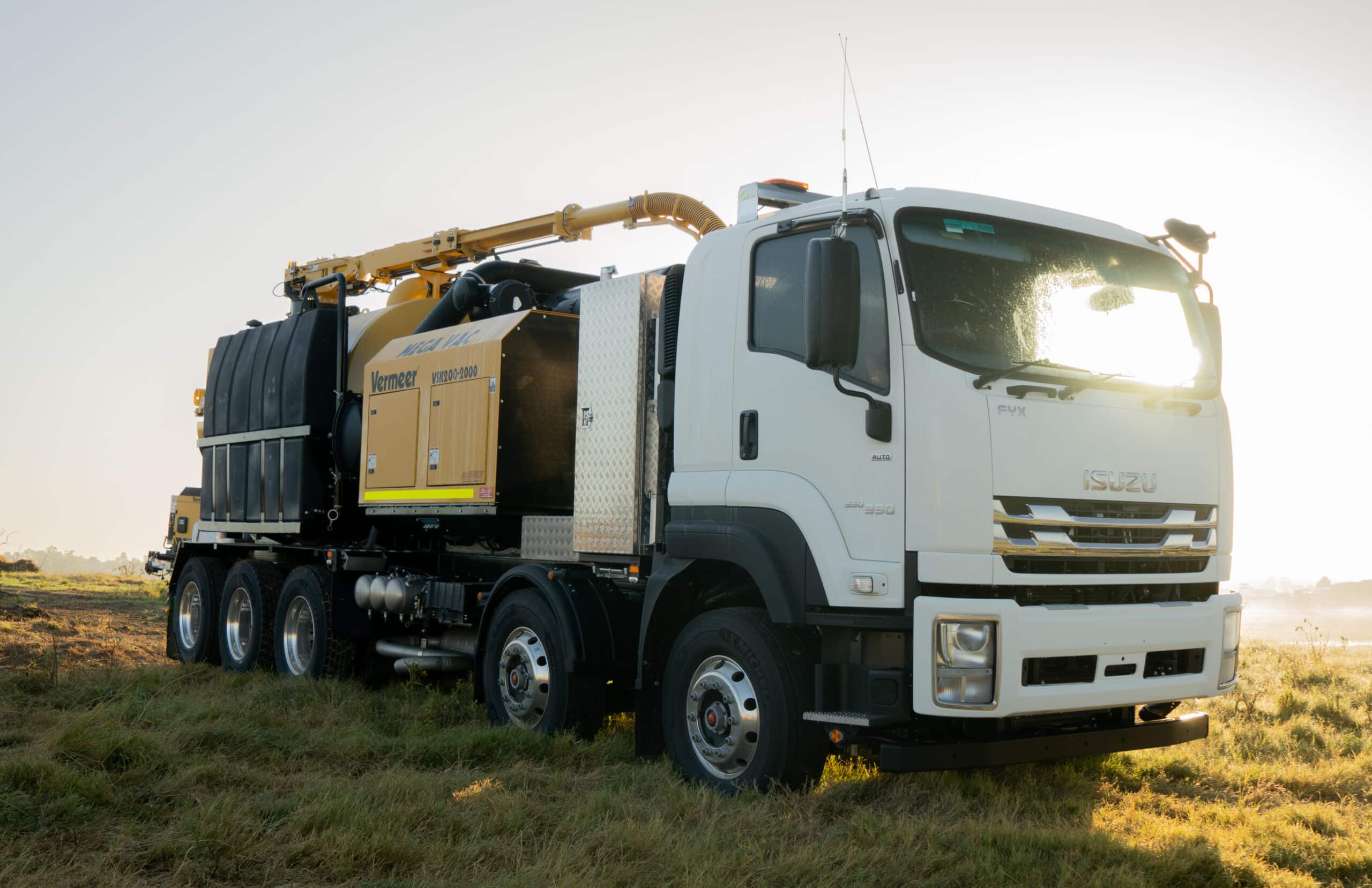In a world where sustainability and environmental protection is key, more and more contractors are turning to equipment that minimises the risk of damaging utilities during the excavation process and most of all, reduces surface disruption in areas with improved landscapes. Vermeer’s range of versatile vacuum excavators work to ensure that environmental disruption, area downtime and damage to utilities as a result of project work are a thing of the past.
Vacuum excavators are becoming increasingly popular in trenchless pipeline projects, with many contractors now recognising the potential safety risks that come with digging trenches or excavating close to urban and residential areas. Vacuum excavation works to mitigate this risk, minimising the risk to employees’ safety as well as reducing the damage caused to the surrounding environment.
Before maintenance work or construction can begin, oftentimes debris needs to be removed or space needs to be exposed. Using a traditional excavator or backhoe to do this can be difficult and may result in damage to the surrounding environment.
Additionally, extra care is needed for works which involve sensitive equipment that can easily be damaged through conventional excavation, such as buried pipes and utility infrastructure.
The how of vacuum excavation
Vacuum excavation works through a combination of powerful suction and containment. High pressure water is used to disturb the debris, which is then vacuumed into the tank.
This approach helps to protect existing underground pipelines and utility infrastructure such as telephone, gas and electricity services, making vacuum excavation – also known as non-destructive digging (NDD) – the safest way to dig.
The combination of high-pressure water with an air vacuum quickly and effectively allows for the removal of significant amounts of earth with minimal damage and destruction to the environment.
Microtunneling projects are commonly undertaken in residential or urban areas, so keeping the work site compact to avoid disruption to the surrounding environment, community and businesses is an incredibly important factor that contractors have to consider.
Utilising vacuum excavation methods – which moves excavated material from the pit straight to the tank – enables contractors to keep work site area to a minimum.
The direct pit-to-tank feature of vacuum excavators means no piles of spoil sitting around the work site, taking up room and requiring multiple trucks and loaders to move. Negating the need for these bulky vehicles avoids disruption to the environment and community, as well as further restricting the work area.
Holding contractors accountable for spoil management
There is an increased demand for awareness and accountability for contractors carrying out works. This is especially true when it comes to spoil management on trenchless pipeline
installation works, with contractors needing to ensure proper disposal environmental regulations are met and site personnel are kept safe.
Further safeguarding against detrimental environmental impact is the fact that vacuum excavation as a practice has minimal incoming and outgoing materials, meaning the process can help contractors to meet stringent environmental guidelines requiring that no spoil makes its way into land or soil by accident.
A vacuum excavator for every application
Vermeer’s extensive range of vacuum excavators excel in a range of projects, effectively replacing more inefficient, cost-effective and labour-intensive methods of working. From digging around utilities, assisting with water main breaks, easily excavating small holes, cleaning up storm drains and much more, Vermeer has a vacuum excavator for every application.
In addition to equipment needed for large scale trenchless projects, Vermeer also offers trailer-mounted vacuum excavators which enable the use of existing vehicle fleets and offer flexibility in applications where lower volumes of spoil are expected.
Vermeer equipment helps save material handling costs, contractors’ time and labour, while also reducing surface disruption by offering visual verification of utility placement, meaning it can dig around poles, even when buried utility lines are tied into it.
The Vermeer difference
Vermeer’s truck-mounted vacuum excavators boast spoil tank capacities ranging from 1,000 to 7,600 litres, as well as a range of configurations to suit any non-destructive digging and liquid waste management application.
Vermeer’s industry-leading boom design cuts the chance of blockages by up to 80 per cent, making Vermeer machines more productive than others.
The integrated silencing system on Vermeer’s equipment also works to dampen sound before it’s released into the atmosphere using an external engine compartment baffle system, allowing for quieter operation, facilitating better jobsite communication and benefiting neighbour and public relations.
With more than 30 years’ experience, Vermeer Australia also offers unparalleled after-sales support with service and spare parts.

 MyDealer:
MyDealer:


